Take Your Photos to the Next Level
Read the full text tutorial here, or read the transcript below.
Hi, I’m Tim Daniels from www.lapseoftheshutter.com, and this is the complete Landscapes Masterclass workflow that will show you how to take your photos from this to this. Before we start, here are a few before/after examples that this workflow can produce. None of these took long to produce, and all were made entirely in Lightroom and Photoshop without any additional plugins or other software. The only helpers that I used were the Lightroom Develop System, the Photoshop Colour Control ActionPack and the Photoshop Landscape Colour Grades, all totally free to download and use from www.lapseoftheshutter.com.
So let’s get straight into the workflow. If you want to follow along, you can download the RAW file for this photo here. Here’s where we will end up at the end of the Lightroom part of the workflow, but lets start from the beginning.
I have already opened this photo in Lightroom and accessed the Develop module. The photo is pretty flat and boring at the moment, but was actually a lot more vibrant in reality. I want to try and use this workflow to get back to that.
By far the most powerful slider in Lightroom is White Balance. Mostly, we only use it to make small, inconsequential adjustments to our photos, but it is possible to extract even more powerful effects. First, push the white balance slider to it’s extreme, either very low or very high. Which one you choose depends on the photo, but it’s easy enough to figure out with some practise. In this case, I have set the white balance to 3500. This has made the photo far too blue, but there is a way to selectively reclaim this. Choose a graduated filter and set its white balance to the opposite of the main white balance slider. Here, I’m using one of the sunset filter presets from the Lightroom Develop System, which I will slightly modify. Then, draw the filter over parts of your photo to reclaim the white balance only in those areas. If it looks unnatural, try changing the tint. You can do the same with radial filters to warm up the area of sky where the sun is setting. With just a few filters , you have already added colour depth only using white balance. I’ll also add bit of clarity to some of the filters, and make some slight changes to exposure. There are a number of these white balance colour overlays, which can create a powerful basis for your processing, saved as presets in the totally free Lightroom Develop System. Go to www.lapseoftheshutter.com to download it.
There is very little else that needs to be done in Lightroom now. I would usually use the Lightroom Develop System to quickly perfect dynamic range, colour grading and any stylisations in just a couple of clicks, but in this case I will go through it by hand. With the eight dynamic range and structure sliders, the goal is to give your photo punch and contrast, and to make sure there is still detail where you want it. As this photo was slightly underexposed, I will boost the exposure and also the whites. A good starting point for the whites slider is to push it to the right until the highlights start to lose detail and become pure white. If you can’t see that happening by eye, you can click on the symbol to the right of the histogram, which will highlight any areas of pure white. We also want to boost the blacks and shadows, but as this is a night shot and supposed to be dark and moody, we don’t want to boost them too much. Clicking on the symbol in the top left of the histogram shows you how much pure black is in the photo. It’s quite a lot here, but it’s fine for a night shot. Boosting blacks or shadows can make a photo seem unnatural, so be careful with these sliders. But also remember that too much pure black or white can make a photo seem a bit flat. It’s all a careful balance. We can also boost contrast to make the photo seem even more dark and moody, and a small amount of clarity and dehaze to boost structure. Both of these sliders and very powerful, so you would usually only use them in small doses. The only exception is cityscapes with lots of detail and texture that can take much higher amounts of structure boost. There are many different dynamic range effects you can create by combining these sliders in different ways. If you wanted to create something like an HDR effect for example, and didn’t want to use the free Lightroom Develop System which has a number of dynamic range effects already laid out, you can try reducing highlights, increasing whites, reducing blacks and increasing shadows. This has the effect of spreading out the histogram at both ends, while constraining the extremes so that they don’t get too under or over exposed.
Now we have got the dynamic range that we want, we can move on to colour grading. Lightroom actually has a lot more power over colour control than you may, at first, think. The HSL, split toning, camera calibration and tone curve areas all control the colour. HSL is usually the best place to start, as it offers the most control over individual colour channels. A good general approach to this is to find the most dominant colour in your photo, then try increasing both saturation and luminance. If you increase luminance, a colour will appear less saturated, so you usually want to move both luminance and saturation sliders together. Then, try making small adjustments with the hue slider until you get something you like the look of. Repeat with the colours either side of your dominant colour. If you’re not sure which is the dominant colour in your photo, take a look at the colour toolbox* in the Lightroom Develop System, which will highlight which colours are present. For this photo, I’ve already gone a little overboard with the graduated filters, so I will only make minor changes in HSL.
Perhaps the most overlooked colour grading tool is the tone curve. In it’s most basic form, it only makes changes to lights and darks, but if you click the symbol in the bottom right, the point curve opens up that allows you to modify the tone curve for the red, green and blue channels independently. There’s a lot you can do here, if you want. Boost the top end of the red channel to boost sunsets, and reduce the bottom end of the blue channel to warm shadows, as two examples. Effects can be as subtle or as powerful as you want — it’s entirely up to you.
For a number of useful starting points, there are many presets that only affect the RGB tone curve, from removing shadows colour casts to enhance blue hour and red skies, as part of the Lightroom Develop System, available for free from www.lapseoftheshutter.com.
Split toning can be really powerful when used carefully and in small amounts. Set it for about 4 or 5 to add a subtle warmth to shadows or to really bring out the blues in the sky. I will use the red sky boost preset, which is a slightly more extreme effect. Camera calibration tends not to be as useful as HSL, but can be a help if HSL changes just aren’t working for you. This is really an area to experiment in, as extreme changes in hue on the primary colour channels can have some really unexpected and useful effects.
We’ll finish in Lightroom with some basic tidying up. Let’s check the box to remove chromatic aberrations, and you can also push the noise reduction sliders up if your photo was shot at a high ISO. Don’t push this so high that the details in your photo become soft though — it’s better to have noise. You may want to use the spot removal tool to get rid of dust, but Photoshop is much better suited for this.
So that’s the photo finished in Lightroom. It’s quite an extreme effect, but it isn’t finished yet. First I’ll export this version as a tiff file, then I’ll hit reset and try it all over again, making different choices to produce different photos. This is called double processing. To quickly double process a photo, you could use one of the many recipes available in the totally free Lightroom Develop System.
I’ll open the version of the photo I just created, plus another that I did earlier into the same workspace in Photoshop, to blend them together by hand. When you are dealing with a double processed photo like this, painting a layer mask on by hand is usually the best way to blend the photos. Because the photos have a very similar dynamic range, other blending methods like luminosity masks will not work very well. So I simply add a layer mask and quickly paint over the parts I want to blend with a large soft brush. I have a video and article that goes into much more depth on the many different ways you can blend photos. Take a look at www.lapseoftheshutter.com. We can now flatten the photo and move onto perfecting the details. We’ll break this process down into colour, tone, stylisations and tidying up.
In Photoshop, we have much finer control over colour than in Lightroom. There are far too many ways to modify colour to go into all of them here, but I find the most useful is saturation masks. These are simply a selection method that allows us to easily select pixels based on the colour saturation, not their hue or luminosity, which means that we can easily shift colours to our liking.
I will use the free Photoshop Colour Control ActionPack to create saturation masks, available from www.lapseoftheshutter.com. If you want to know how to create your own saturation masks, or just to learn more about them, take a look at the how to create and use saturation mask video. Once they are created, they will appear in the channels tab. The high saturation masks contain selections of the most highly saturated colours in our photo, the low saturation masks the most unsaturated colours. The increasing numbers next to the masks indicate how extreme the selection is. So high saturation 3 contains about the top ten percent of saturated pixels in your photo, while high saturation 1 contains the top 50 percent of saturated pixels, a much broader range. You only need to remember that the lower the number next to the saturation mask, the more wide ranging any effects on your photos will be.
Let’s see in in practise. I will control-click on the high saturation 2 mask to load it as a selection, then add a colour balance adjustment layer. The high saturation 2 mask will automatically be applied as a layer mask to the colour balance adjustment layer. We can now make changes to the shadows, midtones and highlights of only the most saturated colours. In this case, I’m going to make them a bit more blue, and a bit more red. We can repeat this with the low saturated colours, which I will make a lot more yellow and red. It feels like we haven’t made much of a change, but lets see the before and after. Remember that if we hadn’t used the saturation masks, the changes we made with the colour balance adjustment layers would be far too extreme.
Now let’s use the mid saturation mask to add some basic contrast. Control-click on the mid-saturation mask, ignoring the warning, and add a curves adjustment layer, automatically loading the saturation mask as a layer mask. A Strong s-scurve often works well with this mask to really boost a photo.
This is really only the tip of the iceberg with what you can do with saturation masks. They are incredibly powerful and can help with all sorts of colour and tone effects. There is much more on them at www.lapseoftheshutter.com.
You can also create pro contrast using a variety of filters. This is saved as an action in the Photoshop Colour Control ActionPack, but if you want to do it yourself, then merge visible to a new layer, with ctrl-alt-shift-e, apply gaussian blur with a radius of 1 pixel, apply the high pass filter with a radius of 100 pixels, apply unsharp mask with amount 500%, radius 1 pixel and threshold of 0, and set the layer to soft light blending mode. You can reduce the opacity to whatever looks good to your eyes, and even paint out areas where this doesn’t work so well. Either way, it is a strong and powerful effect that should only be used sparingly.
Most photos look better with a subtle vignette to help direct the viewer’s gaze where you want it to go. They darken the frame and can help the centre stand out. The easiest way to create one is with the lasso tool, with a feather set to several hundred pixels. Rougly draw where you want the vignette to go, choose select-inverse from the menu, and add a levels adjustment layer. Move the central, grey point slider to the right to create the vignette. You can also brighten the centre of the photo to make the vignette more pronounced. Simply duplicate the vignette layer, by going to layer- duplicate layer, select the layer mask on the duplicated layer by clicking on it and invert it with ctrl-i. Then you can move the grey point slider of this levels layer to the left. This brightens the centre of the photo.
A good final stylisation is to add some highlights glow. This is turning the highlights soft and dreamy, while keeping the shadows sharp. It’s a little too complex to go into now, but there is an action that will do it for you in the Photoshop Colour control actionPack, and also a video showing you exactly how to make the effect yourself, called how to make sunsets glow, available for free on www.lapseoftheshutter.com. As you can see, it adds a glow to the bright parts of the photo, while leaving the darker parts untouched.
Now there is only tidying left to do. First we sharpen. I’ll use the shadows sharpening action from the Photoshop colour control actionpack. This only sharpens the shadows, meaning the soft glow in the highlights is maintained. You get separate sharpening layers for detail and for edges, so you can modify the strength of each independently. If you don’t want to use the actions and want to create this effect yourself, have a look at the sharpen your photos the right way video.
There is a lot of noise in this photo as it was taken at a high ISO. Skies always show the worst effects of noise due to their relatively even tone, so the sky is where we will focus our cleanup efforts. Let’s stamp everything visible to a new layer with ctrl-alt-shift-e, and apply the surface blur filter with a radius of 5 pixels and a threshold of 25. Add a layer mask, and paint out the non-sky areas you don’t want blurring. You can change the opacity of the layer to get the effect to your liking. The advantage of using surface blur to remove noise from sky over other methods, is that surface blur doesn’t seem to cause the sky to lose too much contrast. Take a look at the before and after. A noise reduction action is available in the photoshop colour control actionpack.
The last thing to do is to remove dust. I always leave this until the end, as changes in colour and contrast as you process your photo will always bring out more dust that you didn’t previously notice. Add a new blank layer, select the spot healing brush from the tool palette, set to sample all layers, and zoom to 100% painting out any dust as you scroll over your photo. For larger areas, you might want to use the patch tool, located by right clikcing on the spot removal tool.
How subtle or bold you want to be with these techniques is entirely up to you. I’ve pushed this here to show you exactly what Lightroom and Photoshop are capable of, but don’t feel you have to go so far. For all the free downloadable goodies, plus more tips, techniques and tutorials, take a look at www.lapseoftheshutter.com. If you have any questions, I can be contacted through my website. And you can also show me what you have done with these techniques. I’d like to see the results.
Thanks for watching.
Get the most powerful add-ons for Lightroom and Photoshop!Subscribe to the mailing list and get a free download link right now
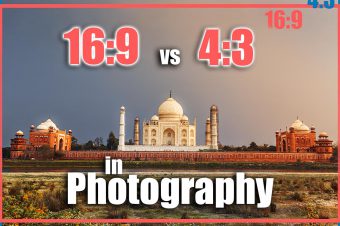
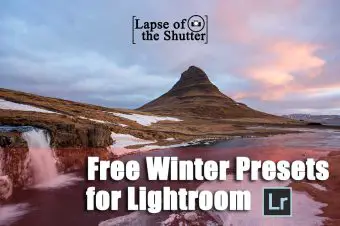
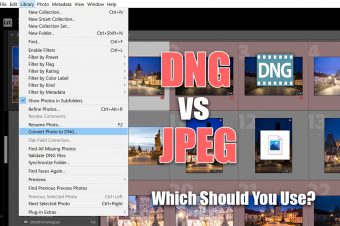
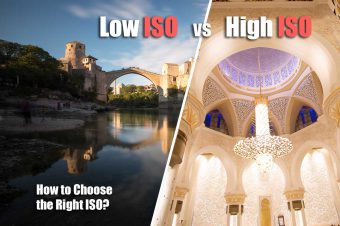
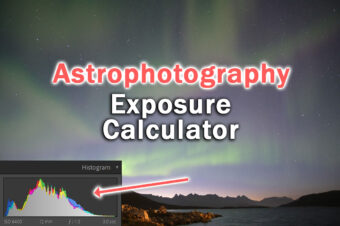
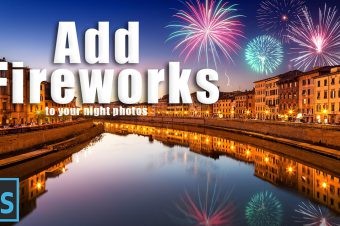
Leave a Reply